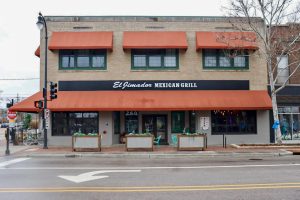Regents to hear HSC repair pleas
January 19, 1988
NIU will ask the Board of Regents to allow the university to seek bids for a contractor to perform an estimated $923,000 in repairs to the Holmes Student Center tower.
Conrad Miller, NIU physical plant project manager, said representatives from Raths, Raths and Johnson, Inc., Willowbrook, Illinois, will give the Regents’ facilities/finance committee a presentation and recommendations concerning the brick veneer covering of the tower Jan. 20. The firm gave a similar presentation to the student center advisory committee Jan. 7.
Donald Raths, principal engineer for Raths, Raths and Johnson, said after studying the condition of the tower during the fall 1987 semester, the firm has recommended the complete replacement of the tower’s brick veneer covering from the ground floor to the top.
In addition, the firm recommends the replacement of the brick covering the west wall of the north addition to the student center, he said.
Miller said NIU will ask the Regents on Jan. 21 to allow NIU to seek bids for a contractor to replace the brick. If the university is allowed to seek bids, the Regents will be asked to approve a final bid at their March meeting. If a bid is approved construction might begin this summer, although a funding source has not been identified, Miller said.
NIU hired the structural engineering firm to investigate the condition of the brick covering after bricks began to deteriorate. The engineers report stated, “The deterioration at the corners (of the tower) is causing large sections of … brick weighing up to two pounds … to fall from the building.”
The firm installed barricades around the student center last fall to protect pedestrians from falling brick. Later, NIU hired a contractor to remove loose bricks and attach nylon netting to the top five feet of the building to prevent loose bricks from falling.
The brick veneer “should not go through another winter with the condition the way it is presently,” Miller said.
The student center was built in 1967, Raths said. “A building this young shouldn’t have problems, but I’m not surprised it does,” he said.
The top five feet of the brick veneer is in the worst condition despite having been replaced in 1977, Raths said.
A new brick covering will last at least 50 years if it is done “properly,” Raths said. The covering is supported by shelf angles at each floor and contains a one-half to one inch cavity between the bricks and the concrete frame of the building.
Raths said the cavity should be empty to allow water to collect and drain through “weep holes” drilled into the brick. In addition, an elastic sealant should be used at each floor to allow vertical expansion of the brick due to temperature changes, he said.
The cavity is filled with mortar and there are no weep holes in the tower, Raths said. Since moisture cannot be evacuated, the bricks have become saturated leading to “freeze-thaw” damage, he said.
Also, the shelf angles supporting the bricks have suffered minimal to moderate corrosion, the engineers’ report stated.






